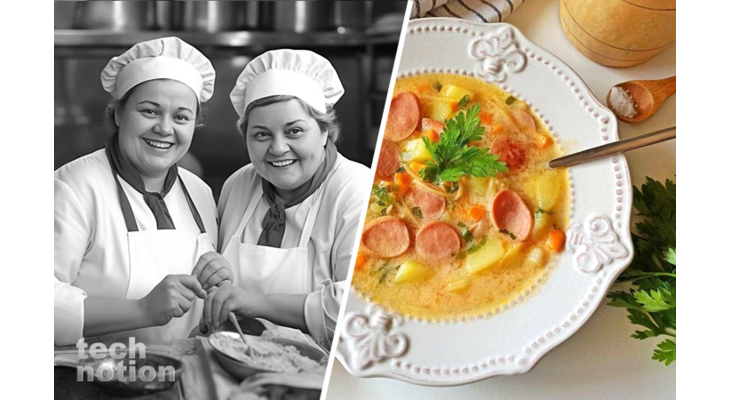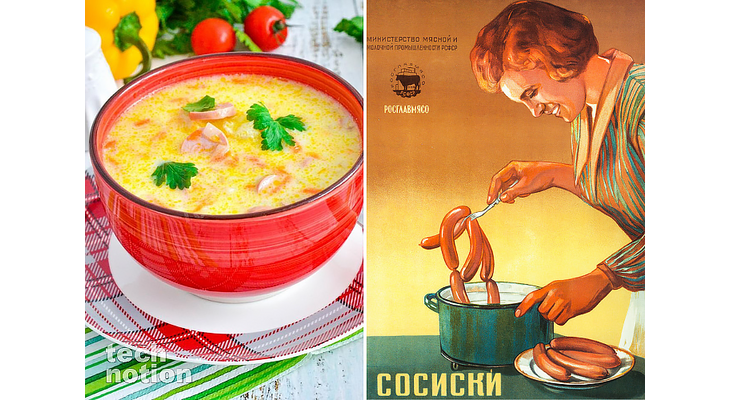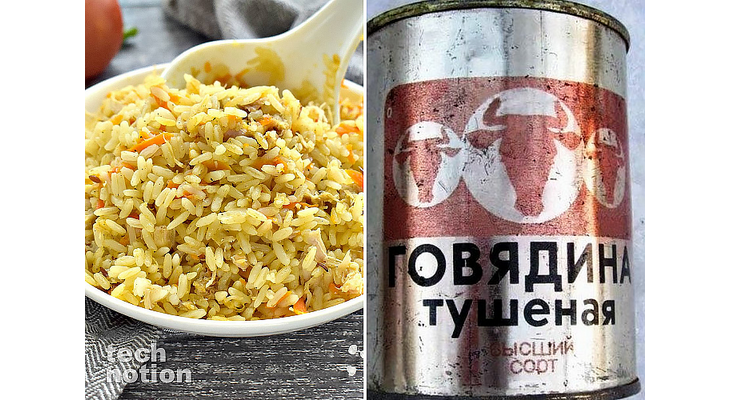Simple and hearty dishes, classics from Soviet canteens. What was the purpose of food from that time? It had to be filling and affordable.
Navy-style macaroni
One of the signature “canteen” dishes was “navy-style macaroni”! It was almost always on the menu because pasta was cheap, and thrifty cooks used significantly less minced meat than for meatballs.
Golden and hearty meatballs with bread
Many dishonest Soviet catering workers were very careful with meat-saving measures. However, no one left hungry. In many traditionally meat-based dishes, part of the minced meat was successfully replaced with bread. Thanks to this secret ingredient, the meatballs turned out golden and attractive in appearance. And in terms of heartiness, they could even compete with classic versions.
Festive salad “Mimosa”
We prepare Vinegret, Shuba, Olivier, and Mimosa for holidays and just because. The “Mimosa” salad was loved primarily because canned fish was cheap at the time.
Sprat sandwich
Sandwiches were a favorite snack of Soviet people. Black bread with butter and salty canned fish was a perfect combination.
Pilaf with canned stew
In Soviet times, canned meat was much more available than fresh meat. Therefore, it was actively used in catering establishments as well as home kitchens. One of the iconic dishes of the era was pilaf with canned meat. It was cooked much faster than the original pilaf and somewhat resembled the Uzbek recipe in taste.
Delicious, cheap spread
This spread was made from just two ingredients: processed cheese and boiled egg. They were either grated or mashed with a fork, then spread on bread. There were many home and canteen recipes.
Sausage soup
Due to the availability of ingredients, this soup was popularly known as “student soup.” The base of this dish was sausage, potatoes, and processed cheese. Potatoes were first boiled, then sausages were added, and a couple of “Druzhba” processed cheese pieces were grated in.
Fried sausage
One of the simplest and most beloved dishes. Sliced “doktorskaia” sausage was coated in egg, breaded, and fried in oil (the “Leningrad style”). In many kitchens, the breading step was skipped, and the sausage was simply fried in the pan.













